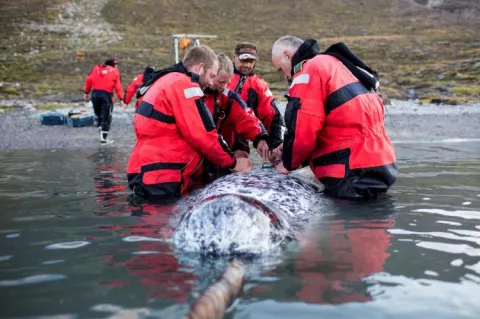Artificial intelligence shines light on narwhal's hunting behavior
Narwhals, notwithstanding their unicorn-like tusks, are a mysterious species. They live in distant Arctic regions and hunt as deep as 1,000 meters down.
They orient themselves using echolocation, making clicking sounds to explore their surroundings. When they hunt, the clicking sounds turn into buzzing sounds as the interval times shorten.












